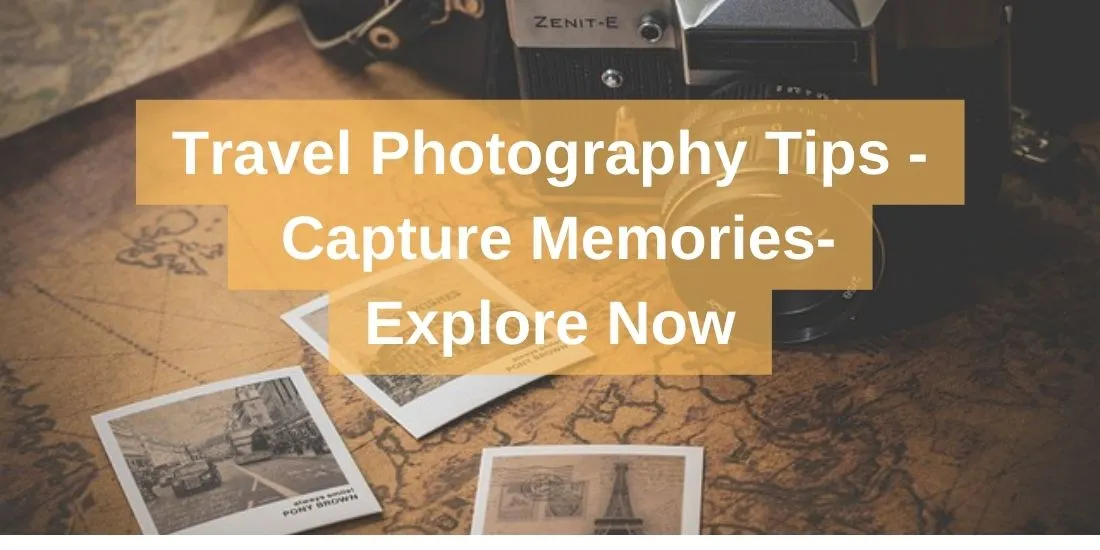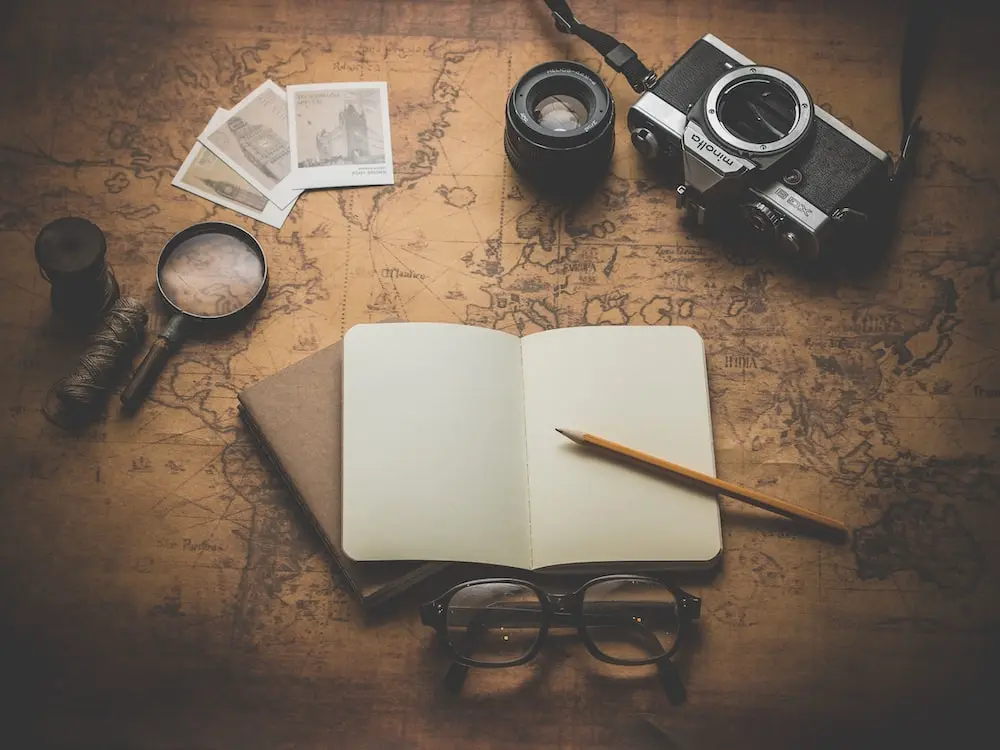Travel Photography Tips – Capture Memories-Explore Now

Indeed, let’s delve deeper into the world of travel photography tips and explore the techniques that can help you capture memorable moments during your journeys. This user-friendly guide will help you understand travel photography thoroughly, from planning your trip to enhancing your images through post-processing. By the end of this article, you’ll be well-equipped to create stunning travel photographs that will serve as personal mementos and wow your audience on social media and in your personal photography collection.
Traveling is a captivating and enriching experience that allows you to explore new cultures, savor local cuisines, and witness breathtaking landscapes. It’s an opportunity to break away from the routine and embrace the unknown. As a traveler, you are immersed in new experiences and unforgettable moments. These memories deserve to be preserved, and one of the most effective ways to do so is through travel photography tips.
Table of Content
Planning Ahead-Travel Photography Tips
- Research Your Destination: Conducting thorough research is crucial before you even set foot on your chosen travel destination. Understanding the area’s culture, geography, and key landmarks will be immensely helpful in planning your photography adventure.
- Create a Shot List: Compile a list of specific shots you want to capture during your trip. This will be a helpful reference, ensuring you get all must-have photos.
- Pack Light: Traveling with heavy equipment can be cumbersome. Opt for a lightweight and versatile camera setup. It’s often quality over quantity when it comes to gear.

Mastering Your Equipment
Mastering your equipment is one of the fundamental pillars of becoming a skilled photographer, and it’s an essential aspect of our Travel Photography Tips. Whether you’re an amateur or a professional, your camera gear is your artistic tool; knowing it inside out is paramount for capturing that perfect shot.
Know Your Gear Inside Out
Your camera is more than just a piece of technology; it’s an extension of your creative vision. You must delve deep into its features, settings, and capabilities to harness its full potential. Here’s how:
- Read the Manual: It might seem obvious, but many photographers must complete this crucial step. The user manual is a treasure trove of information about your camera’s functions, buttons, and settings. Keep it handy and refer to it often.
- Learn About Settings: Dive into your camera’s menu system. Familiarize yourself with exposure settings like aperture, shutter speed, and ISO. Understand how they work together to create different effects. Experiment with custom functions to tailor your camera to your specific needs.
- Explore Lenses: If you have multiple lenses, understand their unique characteristics and strengths. Each lens can bring a distinct perspective to your photography. Experiment with different focal lengths and apertures to see how they impact your images.
- Practice Regular Maintenance: Keep your gear clean and in good working condition. Learn how to properly clean your sensor, change lenses, and protect your equipment from dust and moisture.
- Accessories Matter: Know the accessories that complement your camera, such as filters, tripods, and external flashes. Learn when and how to use them effectively.
Practice, Practice, Practice
Now that you’ve equipped yourself with knowledge about your camera gear, it’s time to put theory into action:
- Set Aside Dedicated Time: Before embarking on a significant photography trip or project, allocate dedicated time for practice. This can be in your backyard, local park, or home.
- Experiment Widely: Don’t hesitate to step out of your comfort zone. Experiment with various shooting conditions, lighting scenarios, and subjects. Try shooting in different modes, from fully manual to semi-automatic settings, to understand how they affect your results.
- Review Your Shots: After each practice session, review your shots critically. Analyze what worked and what didn’t. Look for areas of improvement and places where you excelled.
- Learn from Others: Seek inspiration from fellow photographers. Join photography forums, attend workshops, or participate in photography clubs. Engaging with a community of photographers can provide valuable insights and feedback.
- Document Your Journey: Keep a journal or digital record of your practice sessions. Note down your settings, observations, and any challenges you encountered. Over time, this record can serve as a valuable resource for refining your skills.
The Art of Composition-Travel Photography Tips
- The Rule of Thirds: The rule of thirds is a fundamental technique in composition. Learn how to divide your frame into nine equal sections and use these intersections to place key elements for balanced and visually pleasing shots.
- Leading Lines: Utilize natural or artificial leading lines, such as roads, rivers, or fences, to guide the viewer’s eye through your photograph, creating depth and perspective.
- Experiment with Angles: Feel free to explore unique angles to add depth and interest to your photos. Shooting from low to the ground or above can drastically change the composition.
Capturing the Essence
- Golden Hours: The golden hours, encompassing the time shortly after dawn and just before sunset, offer gentle, warm, and flattering lighting for photography. Use these times to your advantage for stunning images.
- Candid Shots: Some of the most authentic and memorable moments happen when your subjects are unaware of the camera. Capture candid shots to convey genuine emotions and tell a compelling story.
- Focus on Details: While capturing sweeping landscapes is essential, remember to zoom in on small details like textures, patterns, and close-ups. These shots add diversity and depth to your travel album.

Practical Tips
- Stay Patient: Photography often requires patience. Please wait for the right moment, whether it’s the perfect ray of sunlight breaking through the clouds or a fascinating wildlife encounter.
- Use Filters: Experiment with filters, such as polarizers, to reduce reflections and enhance colors in your photos. Filters can exert a significant influence on the quality of your final images.
Post-Processing Magic-Travel Photography Tips
Unlocking the Power of Post-Processing: Transforming Your Images with Care
Choosing the Right Software
Post-processing is a transformative step in the travel photography tips workflow, where the raw potential of your images comes to life. Selecting the right photo editing software is your first critical decision in this creative journey. While Adobe Lightroom and Photoshop are popular choices, the world of post-processing software offers many options to cater to various preferences and needs.
- Adobe Lightroom: This software is renowned for its user-friendly interface and robust cataloging capabilities. It’s an excellent choice for photographers who want to organize and enhance their images efficiently. Lightroom offers powerful tools for exposure adjustment, color correction, and localized edits.
- Adobe Photoshop: If you want to take your editing skills to the next level, Photoshop is a versatile powerhouse. It provides advanced retouching, compositing, and creative editing tools. Photoshop is favored by photographers who want to create intricate and artistic edits.
- Capture One: This software is highly regarded for its exceptional color grading and tethering capabilities. It’s a top choice for professional photographers, especially those who work with medium-format cameras.
- DxO PhotoLab: Known for its superb automatic corrections, DxO PhotoLab is an excellent option for photographers seeking quick and effective enhancements. It excels in noise reduction, lens corrections, and overall image quality improvement.
- Affinity Photo: An affordable alternative to Photoshop, Affinity Photo offers a wide range of advanced editing tools. It’s suitable for both beginners and experienced editors.
- GIMP (GNU Image Manipulation Program): As a free and open-source alternative to Photoshop, GIMP provides a comprehensive set of features, making it accessible to photographers on a budget.
Enhance, Don’t Overdo
Once you’ve chosen your preferred editing software, the next step is to embrace the art of enhancing your images without overdoing it. Here’s how to achieve this delicate balance:
- Preserve Natural Beauty: Remember that post-processing is meant to enhance the inherent beauty of your photographs, not mask it. Avoid over-manipulating your images to the point where they lose their authenticity.
- Subtlety is Key: Subtle adjustments often yield the best results. Minor tweaks to exposure, contrast, and color can have a significant impact without making your photos appear artificial.
- Maintain Realism: While creative editing is encouraged, strive to maintain a sense of realism in your images. Ensure that the final result accurately reflects the scene as you experienced it unless your goal is explicitly artistic manipulation.
- Stay True to Your Style: Develop a consistent editing style that aligns with your artistic vision. This will help create a cohesive body of work instantly recognizable as your own.
- Regularly Revisit Your Edits: It’s a good practice to leave your edits and return to them later with fresh eyes. This can help you spot areas where you may have gone overboard and make necessary refinements.
Post-processing is a powerful tool in photography that can elevate your images to new heights. By choosing the right software and approaching your edits with a mindset of enhancement rather than complete alteration, you’ll unlock the true potential of your photographs while preserving their authentic charm. Remember, the magic of post-processing lies in the subtlety and artistry of your enhancements through travel photography tips.
Sharing Your Story
Mastering your equipment is one of the fundamental pillars emphasized in our Travel Photography Tips. Whether you’re an amateur or a seasoned professional, your camera gear is your artistic tool, making it imperative to know it inside out to capture that perfect shot. This knowledge is a key ingredient in creating stunning travel photographs. It allows you to adapt to diverse environments, lighting conditions, and subjects during your journeys, preserving your travel memories.
Moreover, sharing your travel adventures is vital, and our Travel Photography Tips underscore the importance of not letting your travel photos gather digital dust. Share your experiences through your photographs with friends, family, and fellow travel enthusiasts, leveraging the power of social media platforms and photography websites. By doing so, you create lasting memories and inspire others to embark on their own photographic adventures, further enhancing the global community of travel photography enthusiasts.
Conclusion
In conclusion, this guide has equipped you with essential Travel Photography Tips to capture unforgettable travel memories. From planning and mastering your gear to composition, post-processing, and sharing your story, you now have the tools to create stunning travel photos. Traveling is about immersing yourself in new experiences and cultures; photography is the perfect way to preserve those moments. With patience and practice, you can document your adventures and inspire others. So, pack your camera and explore the world. Your Travel Photography Tips will ensure you capture the beauty of your journey, creating lasting memories and inspiring others along the way. Safe travels and happy photographing!
FAQs-Travel Photography Tips
- What camera gear should I bring for travel photography?
Regarding camera gear, bringing a lightweight and versatile setup is best. Consider a mirrorless or compact camera with a standard zoom lens. A sturdy tripod can also be handy for low-light situations.
How can I improve my composition skills?
Composition is a crucial aspect of photography. Practice the rule of thirds leading lines, and experiment with different angles. Studying photography composition techniques can further refine your skills.
Do I need expensive editing software for post-processing?
Expensive software is only sometimes necessary. Many accessible or affordable photo editing software options, such as Adobe Lightroom or GIMP, can produce excellent results.
What is the best way to approach locals for candid shots?
Approaching locals for candid shots requires sensitivity and respect. Engage in conversations, learn about their culture, and build rapport before taking candid photos. Always ask for permission when possible.
How can I protect my camera while traveling?
To protect your camera while traveling, invest in a high-quality camera bag that provides adequate protection from dust and moisture. Consider camera insurance for added peace of mind.
